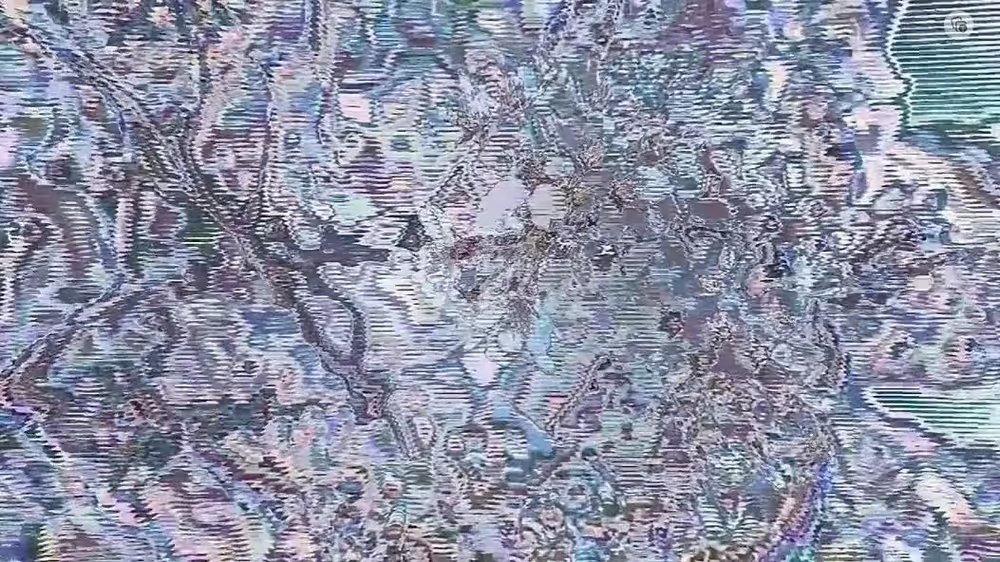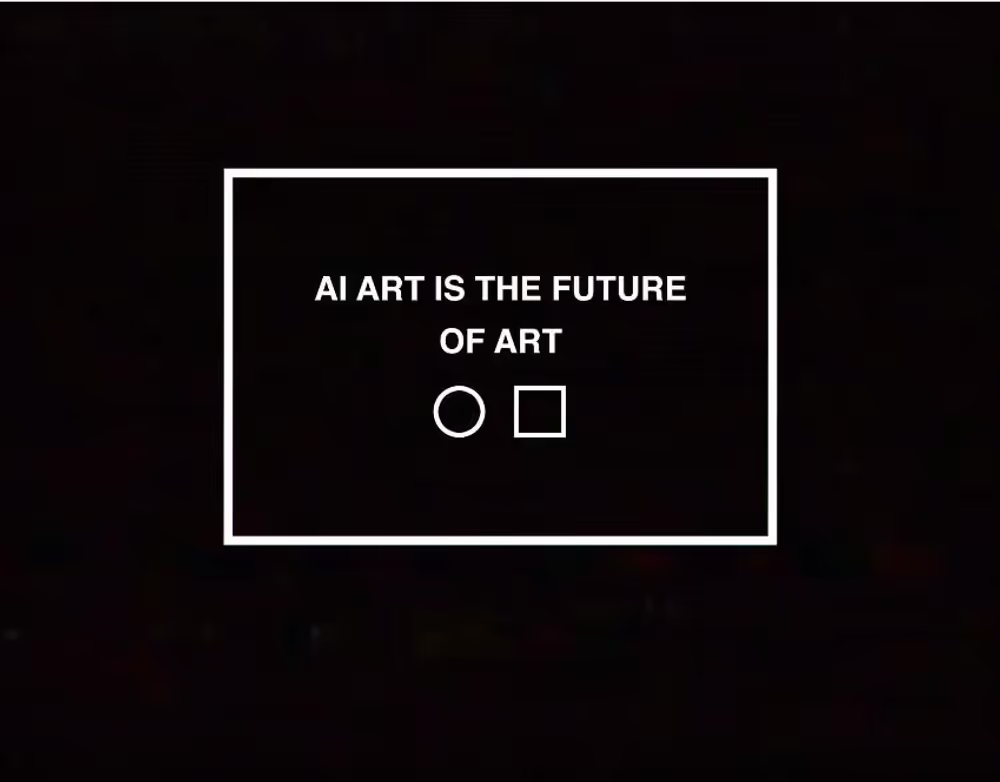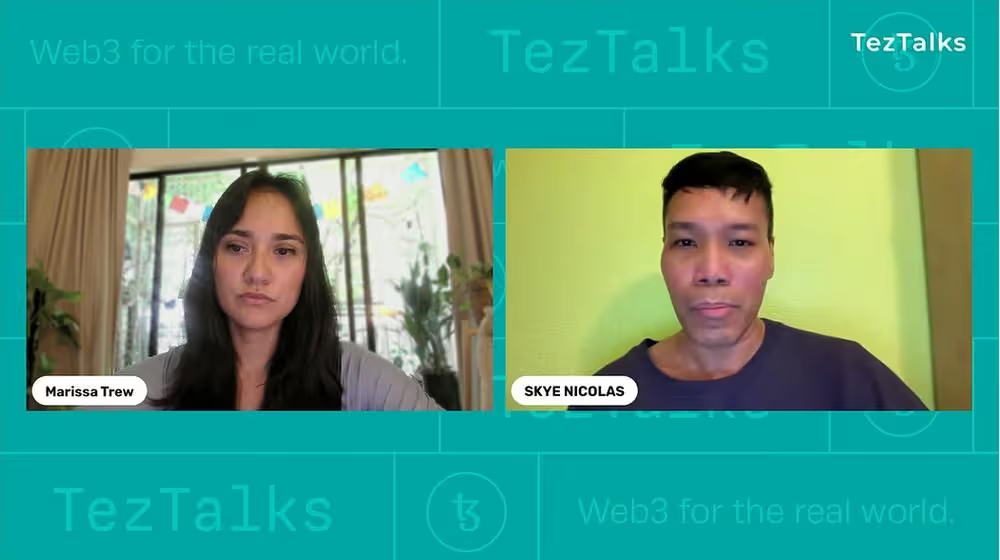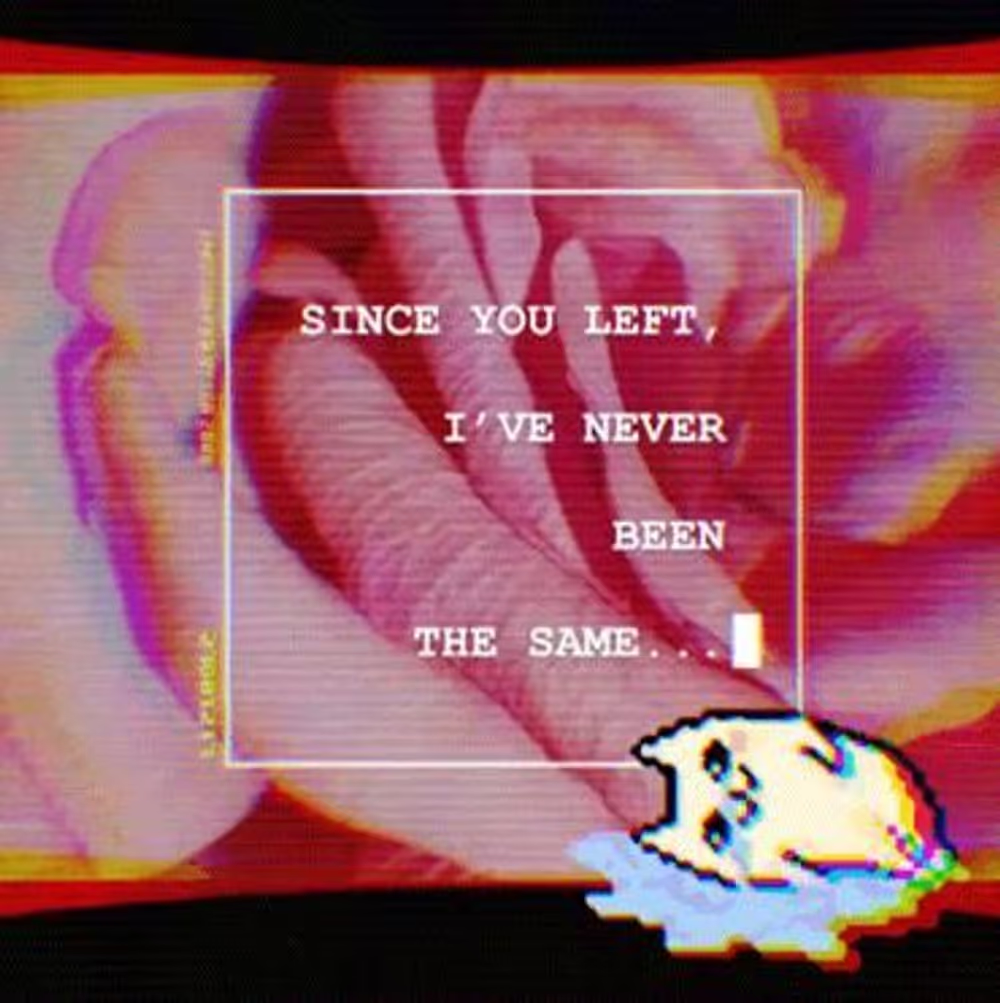Exploring The Digital Transformation and The NFT Branding Dilemma With Skye Nicolas
Just beneath the surface of Skye Nicolas’ work, with all its nostalgic tones and busy use of space, lurks the search for meaning in a digital-driven world.
10 minute read

Just in case you hadn’t noticed, the world we live in is changing very, very quickly. In the space of a single lifetime, digital technologies — most notably the internet — have transformed almost every aspect of our daily lives and our relationships with the people around us. It really is mind-boggling, if you stop and think about it, which, sadly, very few of us really do.
This technology-driven revolution in human behavior has been happening so quickly that even as we’ve watched it take shape around us, there simply hasn’t been time to pause and digest the implications of each new tool or platform or channel before we’re occupied with figuring out how to navigate the next one. For many in today’s world, the important task of reflecting on the changes in our lives and what they really mean has fallen by the wayside.
Not so for digital artist Skye Nicolas. His philosophical musings on the impact of digital transformation on humankind’s collective consciousness have been on full display via his art for several years now. And, just as his works would lead us to believe, Skye Nicolas has notes…
As we assimilate with technology, it seems that we now create these dreamworlds, because we are now in our own little curated bubbles. We are not living in the same timeline as everyone. I can ask you, for example, what you’ve been listening to in your playlist or what movies you’ve watched, and for sure it’s going to be completely different than mine. In the pre-internet, everybody seemed to live in the same timeline because we were given such a small amount of choices.
Now it’s so science fiction-like. Everybody is sort of living this curated version of themselves that they project onto social media. You really don’t get a full sense of the person, because they’re giving you their ideal bit-sized overview of how they want to be perceived. A lot of this interfacing with technology shows up in my work and that’s what I’ve been curious about.

Just beneath the surface of Skye Nicolas’ work, with all its nostalgic tones and busy use of space, the search for meaning in a digital-driven world lurks. Whether front and center or tucked away quietly in a corner, it’s always there. Like all great art, every Skye Nicolas piece carries a message (or two) about this search within it. To hear Skye Nicolas tell it, this message is more than an afterthought, it’s central to his process…
Good art is almost like a data transfer between the artist and the viewer. I think everything, whether it’s objects or digital data, there’s a lot of information embedded into those things. Good art allows the viewer to access what is embedded in those artifacts. It’s part of my production process. When I appropriate things, I carefully choose those ingredients and I don’t really change them much, because I believe that what is embedded in them has value. I add my thoughts or emotions, and I trust what within the creation process, I embed my own thing into them as well. With their simplicity, with their honesty, without over dressing them up conceptually, I think it all comes across.
As he’s worked to make a name for himself in the digital art/NFT space as a part of the Organic Material collective, along with artists like Amir Fallah, Mark Dorf, and Collette Robbins (to name just a few), Skye Nicolas has found a home for many of his works in the thriving art scene of the Tezos ecosystem. Like many others in the space, Skye Nicolas and the rest of Organic Material have found a community of like-minded artists and collectors in the Tezos ecosystem, but this hasn’t come without some difficulty, particularly around how NFTs in the Tezos art ecosystem have widely been valued compared to some other chains in the space, something he spoke about during his recent appearance on TezTalks Radio…

Why is an artwork treated differently if it’s in a flea market vs when it’s in a gallery? It all boils down to context. It’s the cultural parameters within certain systems. A gallery is a system. A flea market is a system within our society. The grocery store is a system. Every system has its own function. In blockchain, people congregated and created these micro-communities in which certain values for art were sort of agreed upon. Hence now we have the ETH vs Tezos thing, and questions like ‘where is authentic art being minted?’. I think it’s great. There’s been a dearth of good discussion. There is no art criticism, and I think art criticism is very crucial. Even though there are great artworks being minted, I feel there’s not enough art discussions being had to contextualize the work. For work to be relevant, it needs to always be talked about.
The quest to bring NFTs and blockchain-based art to the forefront of the global art conversation is a crucial one, not only for artists minting their work on Tezos, but across the blockchain world. While skepticism about NFTs and their value still abounds in the traditional art world and larger consumer sphere, artists like Skye Nicolas and the Organic Material collective see this as a solvable problem, and one that can (and should) be viewed as a branding issue, rather than a fundamental one…
To us, Tezos was a very honest community of artists and creators and collectors who were open to learning about art history. In ETH at the time of the bull run, you minted some arbitrary thing and it sold for 40 ETH and you got your head scratching. Nobody talked about why. To us, those are the sort of branding challenges that NFTs have within the greater art world. We still have a long way to go before the art world completely embraces NFTs because they’ve had this branding problem. It was really a smoke-and-mirrors affair instead of truly appreciating the art, which we felt there was on Tezos.

For those who come from a marketing background (myself included), viewing the lack of widespread acceptance of NFTs as a legitimate investment as a “branding problem” makes a lot of sense. We’ve seen that the technology behind NFTs works, and that those embedded in the space are very excited about their potential to drive change and empower artists on a scale few could’ve imagined just a few short years ago.
Intrigued, I reached out to Skye Nicolas myself to find out more about the NFT branding dilemma and what can be done to overcome it.
When I say “branding problem”, I am generally referring to how NFTs have been publicized by the media and how they are perceived by people who’ve only heard about "jpegs selling for millions of dollars’'. This is obviously a reductive idea of what NFTs are for those who are part of various Web3 communities, and its true potential as a revolutionary technology gets lost within the sensational headlines that often highlight a tragic boom and bust story in which grifters and gamblers played crucial roles in a speculative game of high-velocity trading.
There’s also the challenge that specific types of NFTs (whether they are a 10K PFP project or a rigorously conceptual artwork that utilizes characteristics of the blockchain as an artistic medium) are often lumped together, which can make it difficult to distinguish collectibles from significant works of art that have the potential to be included in the canon of art history. Although I do think, as of recently, art curators who are respected for their knowledge and expertise of NFT technology, digital art, and how it all relates to a greater art history are doing a fantastic job curating exhibitions and collections and bringing much-needed context.
Is the solution to this problem found in individual chains (i.e.; Tezos) distinguishing themselves as ‘THE’ place art exists in the NFT realm, or is this something that is chain-agnostic, and everyone using these tools should be unifying to build a better brand for the technology and NFTs themselves?
The story of Tezos being recognized as “the art chain”, was something born out of the organic growth of artistic communities. Its accessibility (with its affordable minting and transaction fees) provided fertile ground for experimentation, and wherever there are few constraints, all kinds of creativity and innovation take place. But as with all subcultures and movements, trends tend to shape narratives and eventually the market. Tezos has the challenge of attracting crypto-native collectors, as most who are also investors cannot decouple the chain’s merits as an artistic mecca from its trading price as a currency. Personally, I understand both points, but I do believe good art is good art, regardless of the chain it was minted on.
What is the solution to the branding problem that NFTs face, in your opinion? What should the individuals and communities that have staked a claim in this space be focusing on in the quest to strengthen the brand of NFTs?
There is only a branding problem due to a lack of understanding, which stems from a dearth of well-publicized information and contextualization. Currently, there are curators, artists, and thought leaders who are all doing fantastic work. It won’t be an overnight fix, but these thoughtful voices in Web3 are slowly laying the foundation for a more sophisticated art market through exhibitions and critical discussions about finding solutions while providing context to highlight the creative potential of NFT technology as a revolutionary artistic medium.
Although the NFT as a medium of artistic exchange may not have reached its critical mass moment just yet, there’s something powerful emerging among the artists currently experimenting and building in the blockchain-powered art and NFT space, especially on Tezos. And, with artists like Skye Nicolas pushing this powerful new medium forward and testing the boundaries of what these tools have to offer to artists and collectors, it’s only a matter of time before the rest of the world catches on.